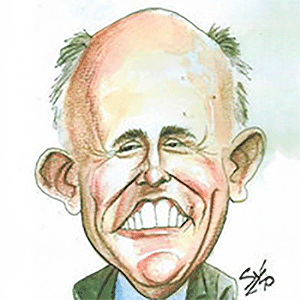Newark radar failure left controllers blind for 90 seconds
Published in News & Features
WASHINGTON — Air traffic controllers guiding planes bound for Newark Liberty International Airport lost radar and radio communication for more than a minute early last week before flights at the key hub were snarled for days, according to people familiar with the matter.
The outage of those key systems occurred on April 28 and lasted nearly 90 seconds, said the people, who asked not to be identified discussing the matter because it isn’t public. Following the incident, multiple employees were placed on trauma leave, the people said.
The incident and resulting reduction in staffing contributed to a week of flight delays and cancellations at Newark airport that pushed United Airlines Holdings Inc. to cut 35 daily round trips at the key hub, its biggest for international departures and a primary gateway for domestic flights. On Monday, Delta Air Lines Inc., which has about 30 departures a day at Newark, said it is also canceling a “small number” of flights due to air traffic control restraints.
The details, which haven’t previously been reported, paint a dire picture of the problems plaguing the Federal Aviation Administration operation in Philadelphia that guides flights into and out of Newark, which handled more than 48 million passengers last year. The facility there has experienced a number of technology failures, said the people.
When radar or radio frequencies stop working, there are no fail-safes, one of the people said, meaning controllers must simply wait for the system to come back online. Left unchecked, some controllers are concerned that issues at the facility could result in a tragic accident, the people said.
In a statement Monday, the National Air Traffic Controllers Association confirmed that on April 28 controllers in the Philadelphia facility “temporarily lost radar and communications with the aircraft under their control, unable to see, hear, or talk to them.”
The FAA said in a separate statement that it’s “working to ensure the current telecommunications equipment is more reliable in the New York area.” The regulator also said that frequent outages can put stress on controllers and confirmed some at the Philadelphia facility who handle Newark arrivals and departures have taken time off to recover from recent events.
“While we cannot quickly replace them due to this highly specialized profession, we continue to train controllers who will eventually be assigned to this busy airspace,” the FAA said. “When staffing or equipment issues occur, the FAA will ensure safety by slowing the rate of arrivals into the airport.”
The incident last week left several air traffic controllers visibly shaken, with some shedding tears, and at least one person experiencing stress-induced heart palpitations, one of the people said. Still, controllers did not just “walk off the job” following the outage, NATCA said.
That’s how United CEO Scott Kirby described the situation in a message to customers Friday that was widely reported.
The FAA has contended with a staffing crunch since management of Newark’s airspace was transferred last year to Philadelphia from another site in New York state. The latest problems reflect a broader challenge of aging infrastructure and staffing shortages that has roiled FAA air traffic control operations.
Transportation Secretary Sean Duffy has said he plans to unveil a plan later this week to upgrade the agency’s equipment and facilities. Last week, he also announced steps to boost hiring, including a slate of new bonuses. The FAA is currently about 3,000 air traffic controllers short of desired levels.
Government watchdogs and the aviation industry have long warned that these problems are becoming more serious and could lead to more travel disruptions, or at worst put safety of the flying public at risk.
The U.S. Government Accountability Office stressed last year that swift action is needed, citing a 2023 FAA assessment that found 76% of the agency’s air traffic control systems were either unsustainable or potentially unsustainable. In 2024, the FAA said the average age of an air traffic control tower was 40 years, and the majority of radar systems were approaching the same age.
Duffy and Nick Daniels, the president of the National Air Traffic Controllers Association, visited the FAA’s Philadelphia facility at the end of last week amid the persistent problems at Newark.
“If we don’t act, we will start to see these issues across the national airspace,” Duffy said in a post to X following his visit.
_____
(With assistance from Siddharth Philip.)
_____
©2025 Bloomberg L.P. Visit bloomberg.com. Distributed by Tribune Content Agency, LLC.







Comments